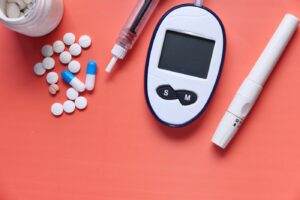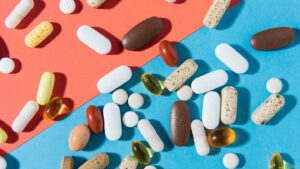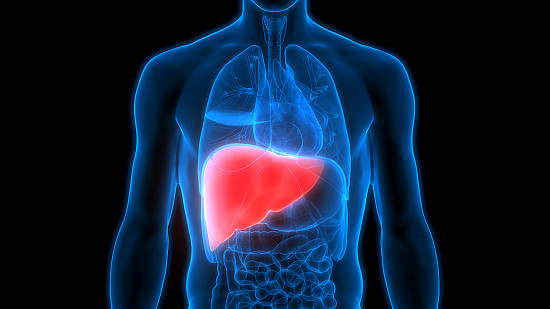Fatty liver, also known as hepatic steatosis, occurs when fat accumulates in the liver, and it’s increasingly common among individuals with type 2 diabetes. This dual diagnosis can complicate management strategies and calls for a nuanced approach to treatment. In this comprehensive guide, we will explore the fatty liver diabetes type 2 treatment, and provide practical advice on managing these conditions effectively.
Contents
What Is The Link Between Fatty Liver And Diabetes Type 2?
 The link between fatty liver and type 2 diabetes is significant and multifaceted, rooted in the body’s metabolism and insulin function. Here’s a detailed explanation:
The link between fatty liver and type 2 diabetes is significant and multifaceted, rooted in the body’s metabolism and insulin function. Here’s a detailed explanation:
- Insulin Resistance
At the core of type 2 diabetes is insulin resistance, where the body’s cells don’t respond effectively to insulin. When cells become resistant to insulin, the pancreas produces more insulin to compensate. This excess insulin can cause the liver to store more fat.
- Excess Glucose and Fat Storage
In type 2 diabetes, the inability of cells to properly use insulin leads to elevated blood sugar levels. The liver responds to these high levels by converting excess glucose into fat. This process contributes to the accumulation of fat in the liver, leading to fatty liver disease.
- Inflammation and Liver Damage
Over time, the accumulation of fat in the liver can cause inflammation and damage to liver cells. This condition, known as non-alcoholic steatohepatitis (NASH), can progress to more severe liver damage like fibrosis, cirrhosis, and even liver cancer. People with type 2 diabetes are at a higher risk of developing NASH due to ongoing insulin resistance and metabolic disturbances.
- Metabolic Syndrome
Both fatty liver and type 2 diabetes are components of metabolic syndrome, a cluster of conditions that include insulin resistance, high blood pressure, high blood sugar, excess body fat around the waist, and abnormal cholesterol levels. The presence of metabolic syndrome significantly increases the risk of cardiovascular disease.
- Impaired Liver Function and Glucose Regulation
Since the liver plays a crucial role in regulating blood glucose levels, fatty liver disease can exacerbate the challenges of managing type 2 diabetes. An impaired liver function can lead to further difficulties in maintaining stable blood sugar levels.
Overall, the link between fatty liver and type 2 diabetes is a complex interplay of metabolic, genetic, and lifestyle factors. Managing one condition often requires addressing the other, highlighting the importance of an integrated approach to treatment and lifestyle changes.
What Are Fatty Liver Diabetes Type 2 Treatment?
Fatty liver diabetes type 2 treatment typically involves a combination of lifestyle modifications and medical treatments. The primary goal is to reduce liver fat, manage blood sugar levels, and address associated metabolic conditions. Here are some of the key medical treatment options:
Glucose-Lowering Medications
Metformin, a first-line treatment, enhances insulin sensitivity and lowers glucose production in the liver, potentially reducing liver fat. GLP-1 receptor agonists, such as liraglutide and semaglutide, not only improve glycemic control but also promote significant weight loss and appetite reduction. This can directly impact liver fat. SGLT2 inhibitors (e.g., empagliflozin, dapagliflozin) work by preventing glucose reabsorption in the kidneys, leading to its excretion in urine. Thereby lowering blood sugar levels and possibly aiding in the reduction of liver fat.
Medications for Liver Health
 While there are no specific medications approved solely for the treatment of non-alcoholic fatty liver disease (NAFLD), some drugs have shown promise. Vitamin E, an antioxidant, has been found to improve liver function in non-diabetic individuals with NASH by reducing oxidative stress and inflammation in the liver. Pioglitazone, another drug, can improve insulin sensitivity and reduce liver inflammation and fibrosis. However, it needs to be used judiciously due to potential side effects like weight gain and heart failure risk.
While there are no specific medications approved solely for the treatment of non-alcoholic fatty liver disease (NAFLD), some drugs have shown promise. Vitamin E, an antioxidant, has been found to improve liver function in non-diabetic individuals with NASH by reducing oxidative stress and inflammation in the liver. Pioglitazone, another drug, can improve insulin sensitivity and reduce liver inflammation and fibrosis. However, it needs to be used judiciously due to potential side effects like weight gain and heart failure risk.
Statins
Statins, commonly used to lower cholesterol, can be particularly beneficial for patients with both fatty liver and type 2 diabetes. They reduce cardiovascular risk. This is elevated in these patients. Some studies suggest that statins may also have a favorable effect on liver enzymes and inflammation, although they are not used specifically for treating NAFLD.
Weight Loss Medications
In cases where obesity is a primary concern, medications that promote weight loss can be prescribed. These drugs can help achieve a significant reduction in body weight, which is known to have a positive impact on both blood sugar control and liver fat reduction. Medications such as orlistat, phentermine-topiramate, and bupropion-naltrexone are some options.
Bariatric Surgery
For patients with severe obesity and type 2 diabetes, bariatric surgery can be a viable option. This surgery not only leads to substantial weight loss but also often results in the improvement or remission of type 2 diabetes. This improvement is due to multiple factors, including hormonal changes, caloric restriction, and weight loss. These changes can also lead to a significant reduction in liver fat and improvement in NAFLD.
Emerging Treatments
The field of NAFLD treatment is evolving, with several new drugs under investigation. These include medications targeting liver fat metabolism, inflammation, and fibrosis. Drugs like FXR agonists, PPAR agonists, and SCD-1 inhibitors are some examples. These treatments are in various stages of clinical trials. And it’s hoped that they will offer new avenues for treating fatty liver disease in the context of diabetes.
Regular Monitoring
Managing both fatty liver and type 2 diabetes requires regular monitoring. This includes routine liver function tests to assess liver health and periodic assessment of blood glucose levels to manage diabetes effectively. Monitoring helps in the timely adjustment of treatments and in assessing the progression or improvement of both conditions.
Patients need to work closely with their healthcare team, including endocrinologists, hepatologists, and dietitians, to create a tailored treatment plan. This multidisciplinary approach ensures comprehensive management of both fatty liver disease and type 2 diabetes.
What Is The Best Diet For A Diabetic With a Fatty Liver?
 Managing a diet for someone with both diabetes and fatty liver involves balancing the needs of both conditions. The primary goals are to control blood sugar levels, reduce liver fat, and maintain a healthy weight. Here is a guideline for the best diet for someone with diabetes and a fatty liver:
Managing a diet for someone with both diabetes and fatty liver involves balancing the needs of both conditions. The primary goals are to control blood sugar levels, reduce liver fat, and maintain a healthy weight. Here is a guideline for the best diet for someone with diabetes and a fatty liver:
Low-Carbohydrate Diet
A diet low in carbohydrates, particularly refined carbs and sugars, is beneficial as it helps in managing blood glucose levels and reduces insulin spikes. Focus on complex carbohydrates from whole grains, vegetables, and fruits in moderation.
Healthy Fats
Incorporate healthy fats such as omega-3 fatty acids found in fish like salmon, sardines, and trout. These fats are beneficial for liver health and can help improve insulin sensitivity. Limit intake of saturated fats and avoid trans fats.
Lean Proteins
Opt for lean protein sources such as poultry, fish, tofu, legumes, and low-fat dairy products. These provide essential nutrients without excessive calories or unhealthy fats, which can contribute to liver fat.
High Fiber Foods
Fiber aids in digestion and helps in controlling blood sugar levels. Foods high in fiber include vegetables, fruits, whole grains, and legumes. Soluble fiber, in particular, found in foods like oats, apples, and nuts, is beneficial for both blood sugar control and liver health.
Limited Alcohol Consumption
Alcohol can exacerbate liver problems and interfere with blood sugar control. It’s advisable to limit or avoid alcohol if you have fatty liver disease and diabetes.
Control Portion Sizes
Managing portion sizes helps in maintaining a healthy weight, a crucial aspect in controlling both diabetes and fatty liver disease. Eating smaller, more frequent meals can also help in stabilizing blood sugar levels.
Avoid High-Fructose Corn Syrup
Foods high in fructose, particularly those with added sugars like high-fructose corn syrup, can contribute to liver fat accumulation. Avoid sugary beverages, sweets, and processed foods with added sugars.
Limit Sodium Intake
High sodium intake can lead to fluid accumulation and increased blood pressure. Choose fresh, unprocessed foods over canned or processed products high in sodium.
Antioxidant-Rich Foods
Consuming foods rich in antioxidants can help protect the liver by reducing oxidative stress. Berries, nuts, green leafy vegetables, and spices like turmeric are good choices.
It’s important to note that dietary needs can vary from person to person. Consulting with a dietitian or a healthcare provider to create a personalized meal plan is crucial. They can help tailor dietary recommendations to meet individual health needs, taking into account the severity of diabetes and liver disease, as well as other personal health factors.
Conclusion
In conclusion, fatty liver diabetes type 2 treatment requires a holistic approach that combines lifestyle changes, dietary modifications, and medical treatments. Key strategies include adopting a healthy, balanced diet rich in fiber and low in processed foods, engaging in regular physical activity, and maintaining a healthy weight. Medications may be necessary to control blood sugar levels and support liver health.
By working closely with healthcare professionals, individuals can effectively manage both fatty liver and type 2 diabetes. Remember, every step taken towards a healthier lifestyle counts in this journey! Do you want to get rid of diabetes? Join our online diabetes treatment program and reverse Diabetes naturally through lifestyle changes such as a Personalized Diet plan, Exercise, Yoga, dieticians, and health coaches.

